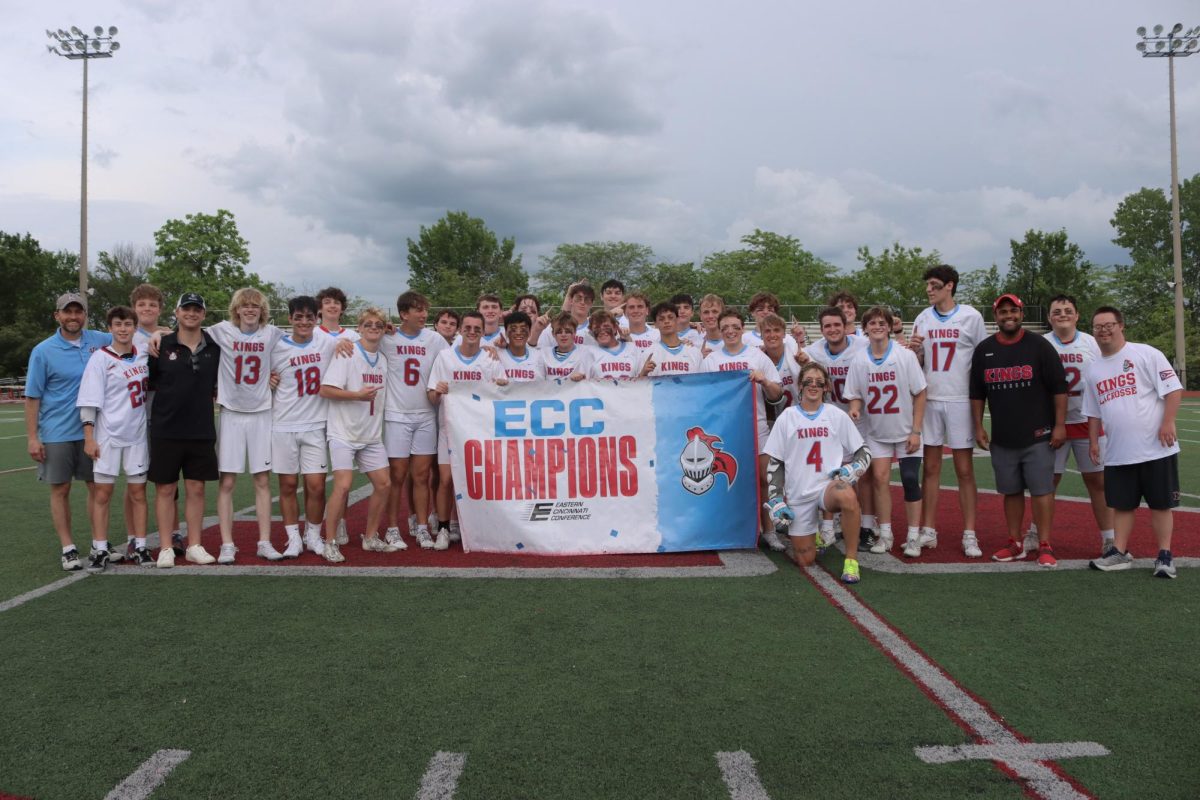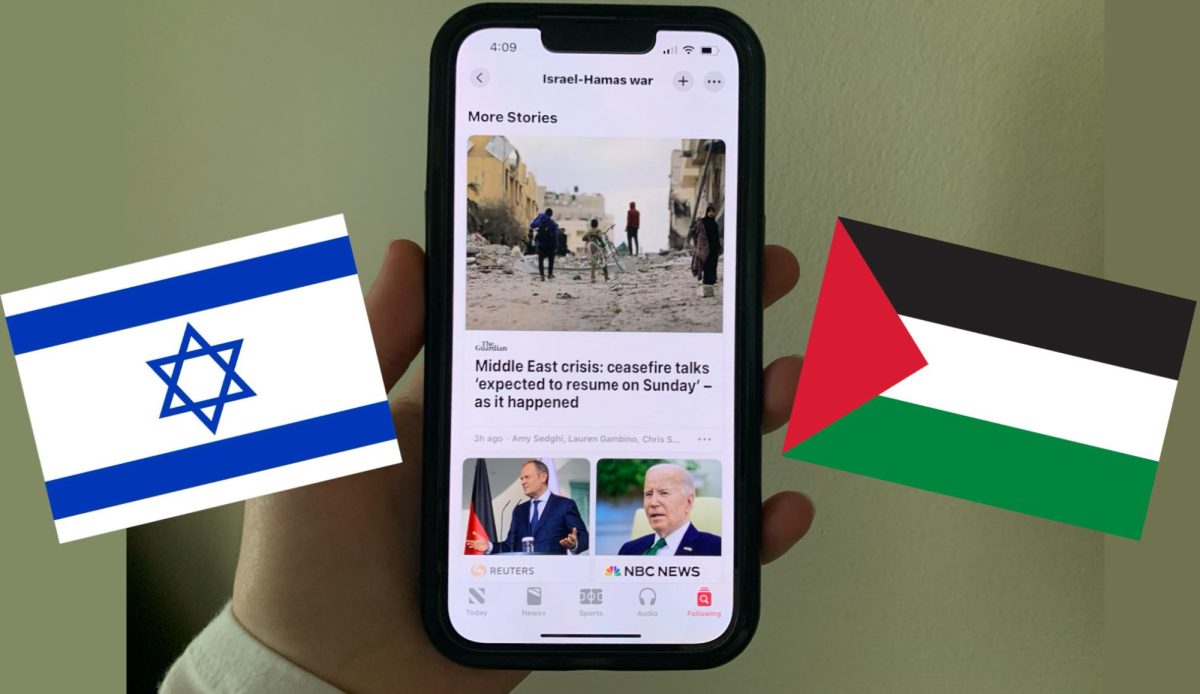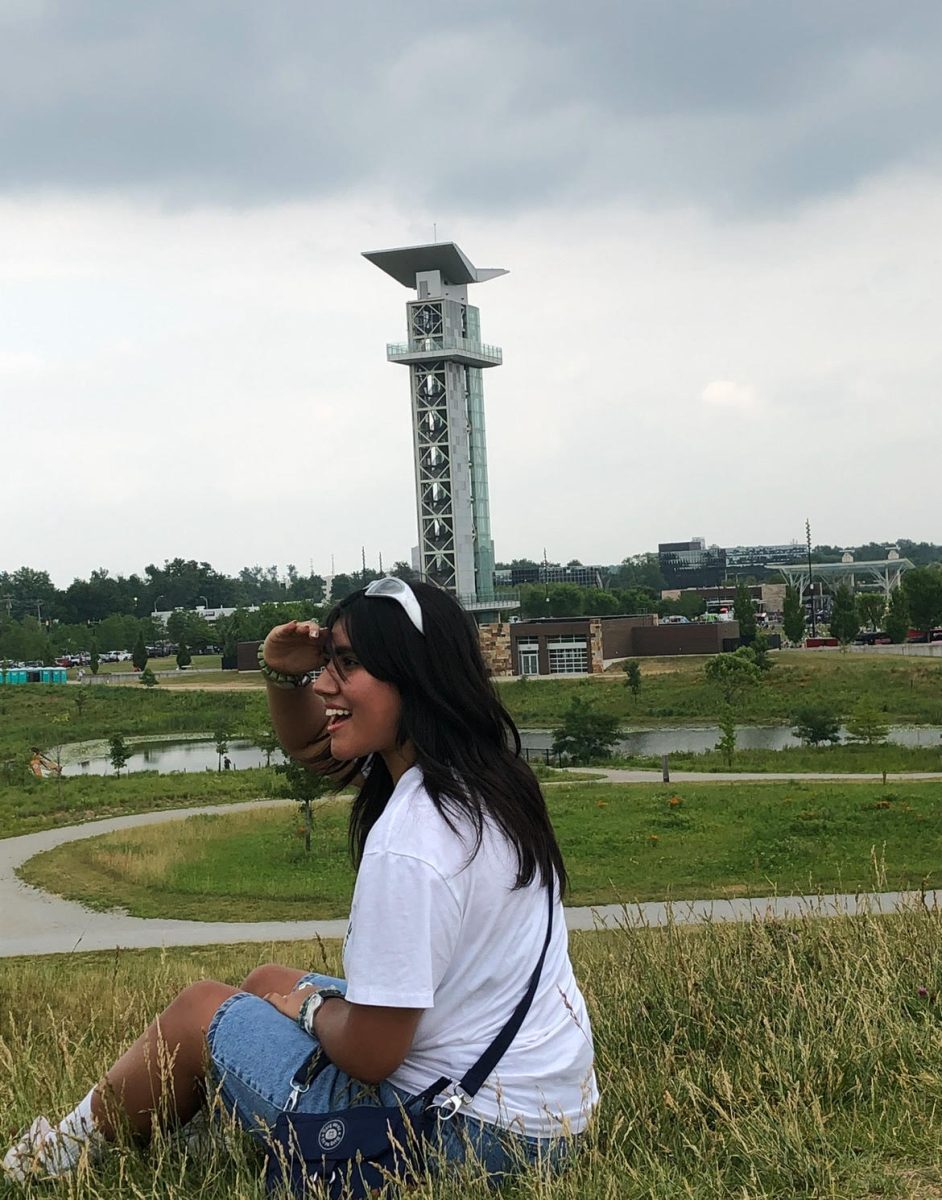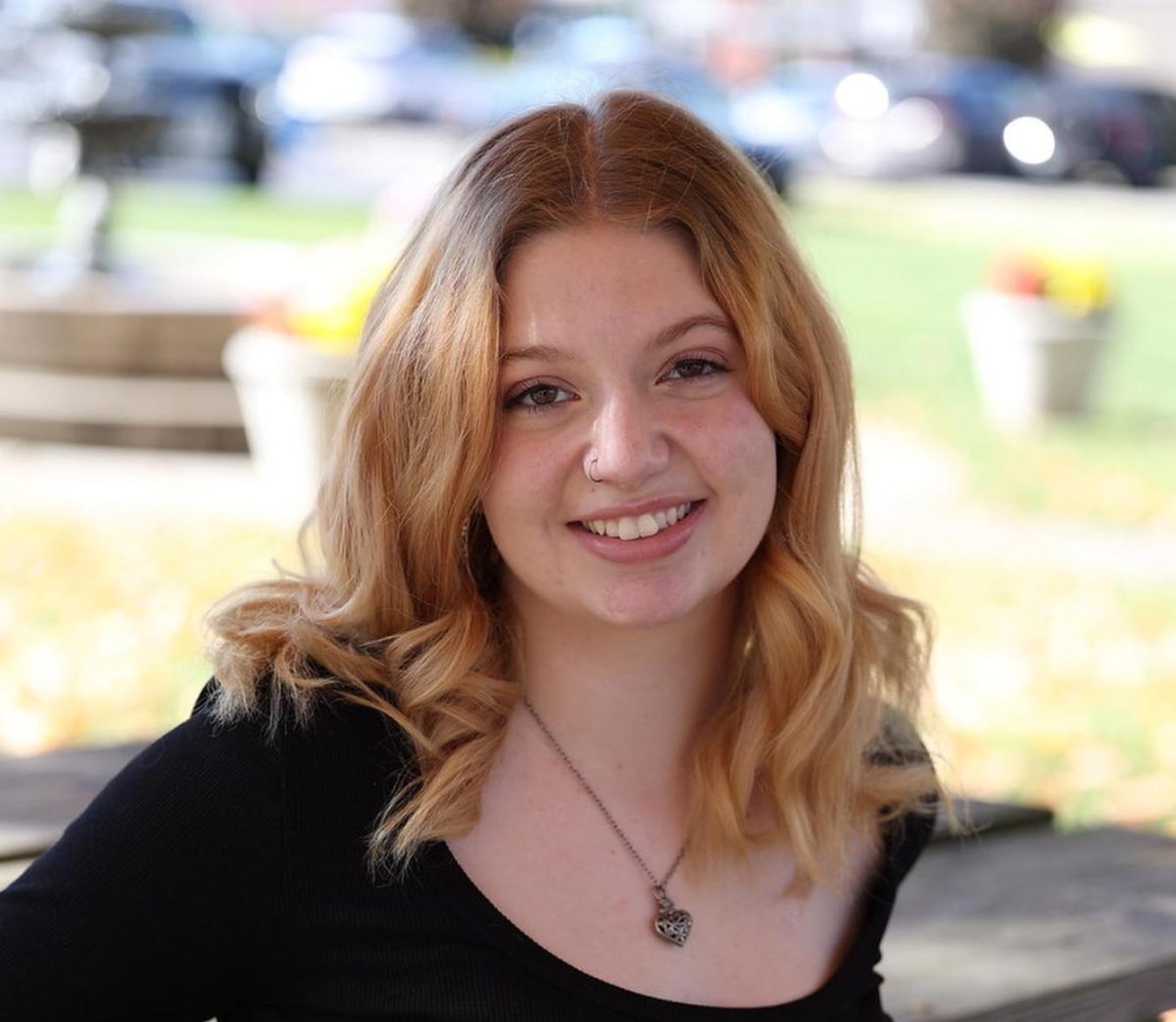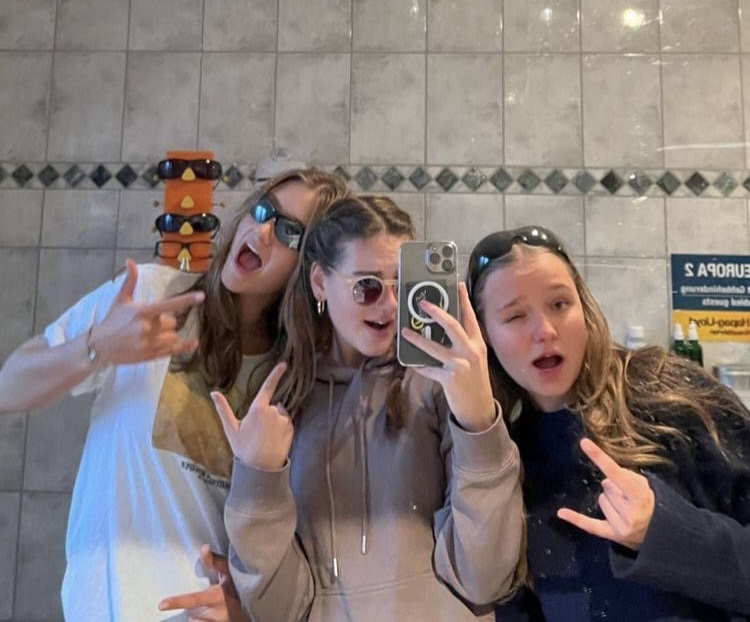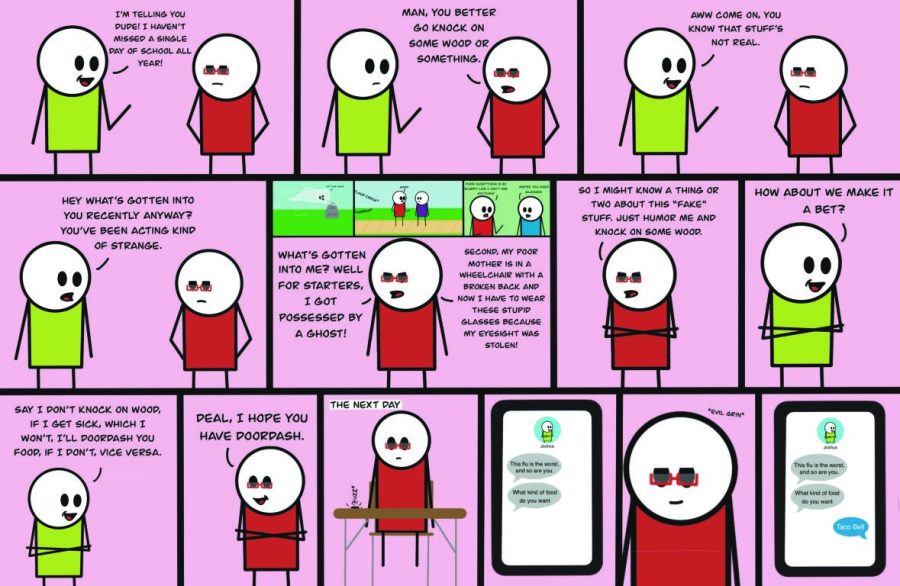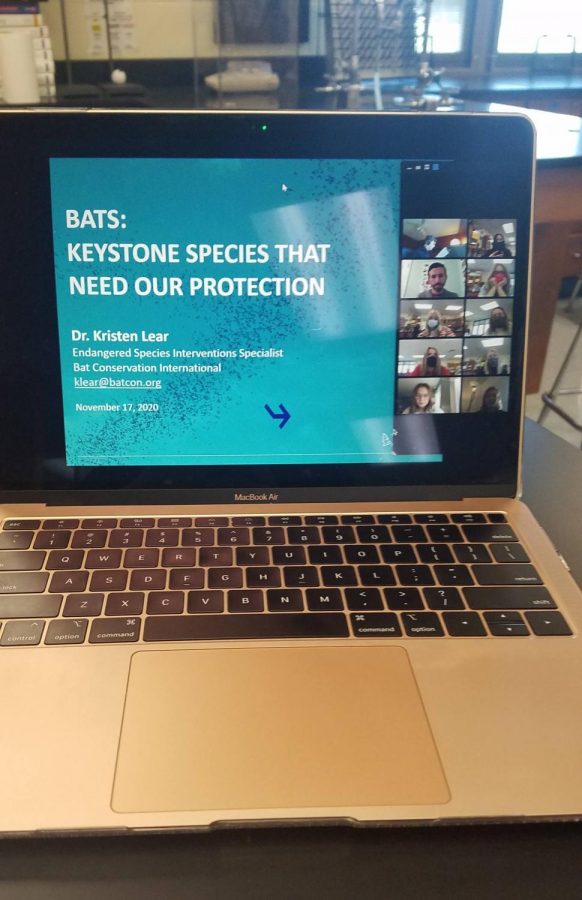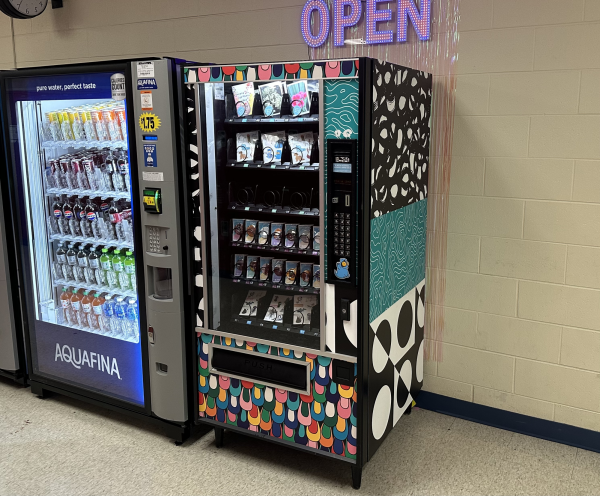AP Environmental Science speaker discusses real-world application for bat conservation
5th Bell AP Environmental Science’s Zoom meeting for Dr. Lear’s slideshow presentation
On Tuesday, November 17th, Dr. Kristen Lear from Bat Conservation International (BCI) joined 5th Bell AP Environmental Science through Zoom to talk about bat conservation. The students recently covered curriculum over ecology and biodiversity, discussing the issues of endangered species and the important care and protection of at-risk animals.
“I wanted APES to be more than just a content-heavy course. My goal was always to get students outside in nature and make this class as real-life as possible,” Environmental Science teacher Ed Gomes said. “COVID restrictions have made that quite difficult, so I decided to reach out to a conservation agency to find a guest speaker. My original attempts with Cincy Zoo were unanswered so I just kept researching until I found BCI. I contacted them, not knowing if I would get a response, but I did–and pretty quickly, too.”
Lear’s presentation focused on how bats were important to the survival of ecosystems, especially in our local Midwest.
“One of the mean things bats do is insect pest control. So about 70% of bats around the world eat insects, so most of the bats, the majority of bats here in the US, eat insects. And a lot of these insects are agricultural pests. So moths and beetles that destroy our corn crops, or cotton, pecans, all of these crops are destroyed by these insects and these bats help keep those populations under control,” Lear said.
By maintaining pest control, bats can cut agricultural costs by about $3 billion dollars per year. The only downside to this species is their vulnerability to disturbances like diseases, habitat and food loss from human development, climate change, and wind turbines. They’ve affected 50 percent of the total bat species in the US and Canada.
“You see these bats getting hit; they literally get whacked with the blades, and they die. Or, even if the bat doesn’t hit the blades, what happens is barotrauma, which is basically the pressure change; there’s a lot of pressure change around the blades. And so if the bat gets close enough to that area, it will actually cause internal organ damage to their lungs and they’ll die from that,” Lear said.
The most commonly seen in our area would be Little Brown Bats. This species has become endangered due to white-nose syndrome, caused by white fungi that attach to bats on their noses, ears, and wings.
“Since 2006, it’s killed over 6 million bats, and this is a very old estimate, so it’s probably over 8 to 10 million bats that’ve been killed. And what it (the fungus) does is it grows in these cold, high humidity caves, and those caves are where these bats are hibernating during the winter,” Lear said. “And it causes these skin lesions and it starts to eat away at the skin and makes holes in the skin. Those lesions are obviously irritating to the bat so it actually wakes the bat up from hibernation and once it’s awake, it gets really hungry, so it needs to eat. And so it flies outside of the cave in the middle of winter, and of course, there’s no insects, so the bats either freeze to death or starve to death.”
Captive zoo or wildlife service breeding is quite difficult for this species, on top of their slow reproduction of one pup per year. The Cincinnati Zoo, which specializes in taking care of Vampire Bats and Indian Giant Fruit Bats, doesn’t have as much to worry about compared to the wild US populations. These tropical mammals hibernate, but due to the warmer climates year-round, they can adjust to temperature-controlled indoor habitats.
“Breeding the native species of bats in the US is difficult due to the hibernation aspects and this is what can trigger them for breeding before or after hibernation,” Night Hunters Head Zoo Keeper Michael J. Guilfoyle said. “But most of the species from the tropics breed readily in captivity.”
In the presentation, Lear explained solutions to ensure all wild bats’ safety and survival. in northern Mexico, three bats species live off agave flower nectar and help pollinate the plants. As agriculture has taken many agave plants to harvest for themselves, this has left bats, like the Mexican long-nosed bat, with no food, and the agave with less population growth. To counteract this, Lear leads the Agave Restoration Initiative.
“Bat Conservation International has been working across the US southwest in Arizona, New Mexico, and now Texas, and into Mexico, to plant agaves across the bats’ migratory range to feed the bats,” Lear said. “Working with rural communities to plant agaves for their purposes so that they can use some of the agaves, but then the bats can also get the food that they need. So it’s been really fun and it’s really important and great to be a part of this.”
To help bats from home, Gomes raised the question of building a bat house for his yard. Bat houses ensure a temporary home for bats who have been moved from their previous roost or are taking a small trip. There are multiple other ways for humans to help bats as well.
“I think one of the really good things that anyone can do is a couple of things; supporting, you know, bat organizations by either talking about them with your friends. Donating, if you can there,” Lear told The Knight Times. “If you have nephews, or nieces, or kids, you can give gifts of like, ‘adopt a bat’ with some organizations, and really just talking to your friends and family about how important bats are for the environment.”
Dr. Lear also shared her experiences in Australia and Mexico before, during, and after receiving her doctorate. She described the different species she studied, and how her research and fondness for those bats led to her current profession.
“I never really was into football or anything, but when my dad would watch football, I would always ask, ‘which team was the losing team, like which one did people think wasn’t gonna win?’ And then I would root for them, you know, like, I just had this thing. And to me, bats really embody that; of this underdog that needs support,” Lear said.
Want to show your appreciation?
Consider donating to The Knight Times!
Your proceeds will go directly towards our newsroom so we can continue bringing you timely, truthful, and professional journalism.

As a senior and Co-Editor in Chief of The Knight Times, Alyssa enjoys assisting her fellow writers on their articles and interviewing; she loves to hear...






